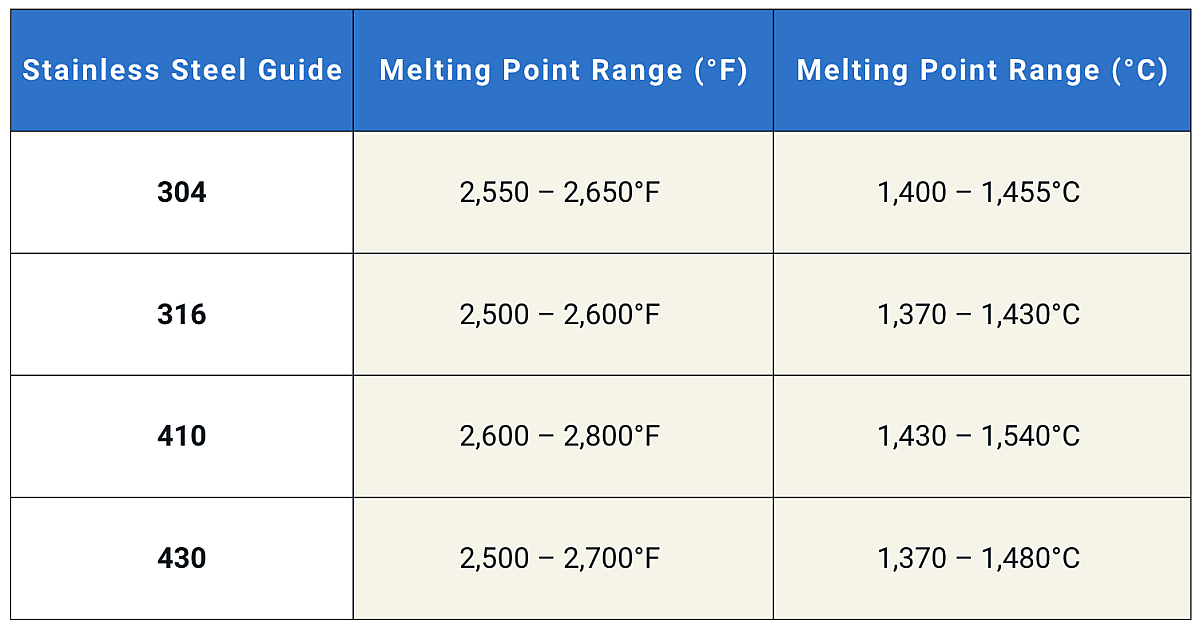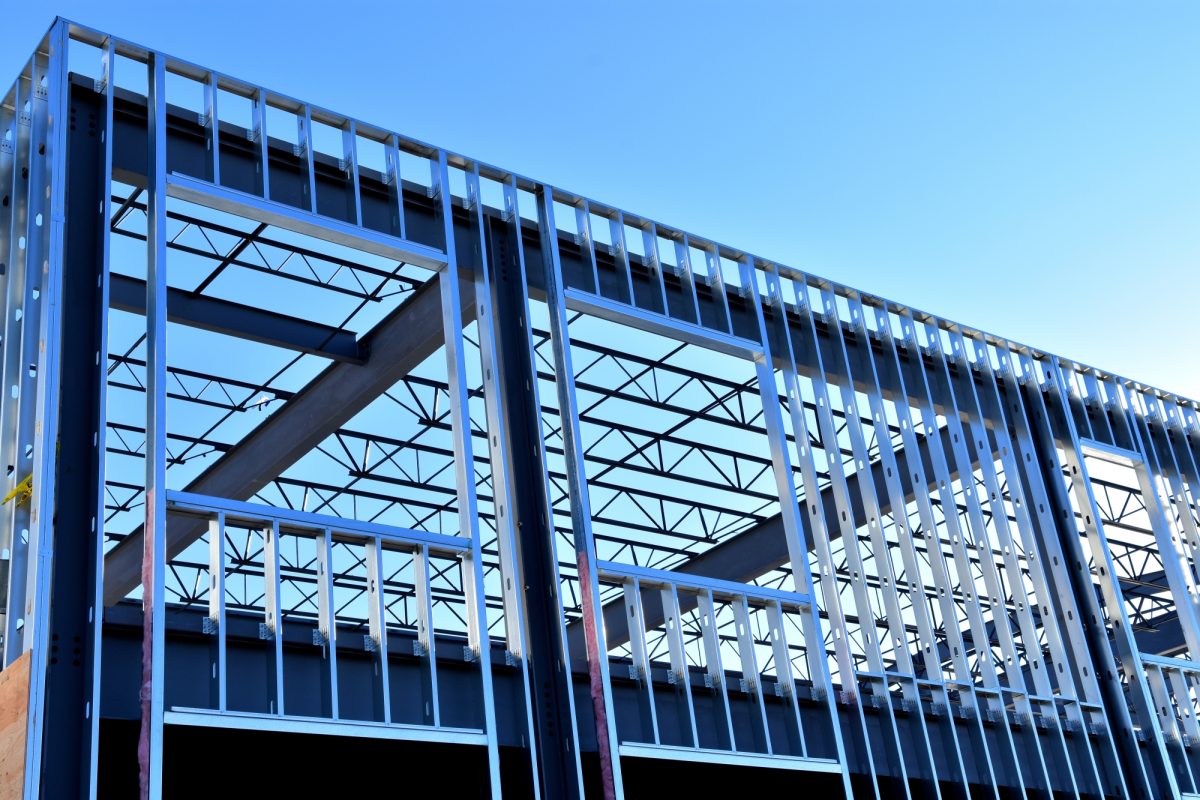Stainless Steel’s Melting Point: A Key Consideration for Manufacturers

When selecting materials for manufacturing, knowing the precise performance characteristics of your metals is essential. One key property that often comes into play, especially in high-heat applications, is the melting point of stainless steel.
Whether you're fabricating components for industrial ovens, designing structural elements, or sourcing material for heavy-duty equipment, understanding how stainless steel behaves under heat can inform smarter purchasing decisions and better long-term performance.
What Is the Melting Point of Stainless Steel?
The melting point of stainless steel typically ranges from 2,500°F to 2,800°F (1,370°C to 1,540°C), depending on the specific grade and chemical composition. Stainless steel is not a single material, it’s an alloy family that includes multiple grades, each formulated for different environments and applications.
Here’s a breakdown of some common stainless steel grades and their approximate melting ranges:

Why the Melting Point Matters
In metal fabrication, high temperatures are often part of the processing – whether it's welding, cutting, or forming. Knowing your material’s melting point helps determine suitability for specific environments, especially in:
- Heat exchangers
- Industrial ovens and furnaces
- Automotive exhaust systems
- Chemical processing equipment
- Food-grade cooking surfaces
Choosing the right grade of stainless steel with the appropriate thermal properties ensures durability, safety, and performance across a wide range of operating conditions.
What Influences Stainless Steel's Melting Point?
The melting point of a stainless steel alloy is primarily influenced by its chromium and nickel content, as well as the presence of other alloying elements like molybdenum, carbon, and manganese. For example:
- Austenitic stainless steels (like 304 and 316) have lower melting points but higher corrosion resistance.
- Martensitic stainless steels (like 410) tend to have higher melting points but are more brittle.
- Ferritic stainless steels (like 430) offer good thermal conductivity with moderate melting ranges.
Sourcing Stainless Steel from a Trusted Partner
At Mill Steel Company, we supply a wide range of stainless steel grades suited for demanding industrial environments. Our team can help you select the optimal material based on your project’s thermal, mechanical, and corrosion-resistance requirements.
With nationwide distribution, precision processing, and industry expertise, we’re more than a supplier – we’re a strategic partner to your success.
Contact us today to talk with a product expert or explore our offerings online.


